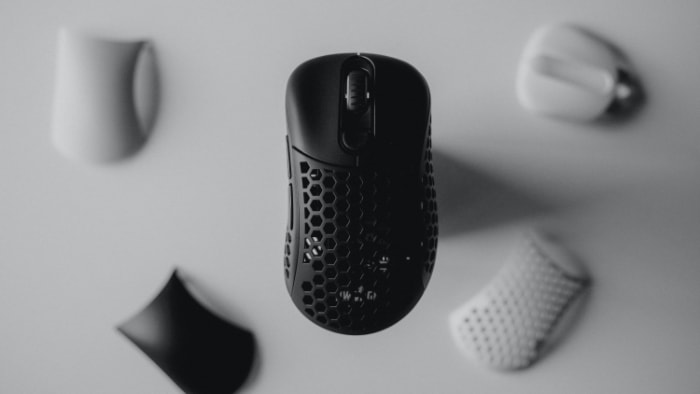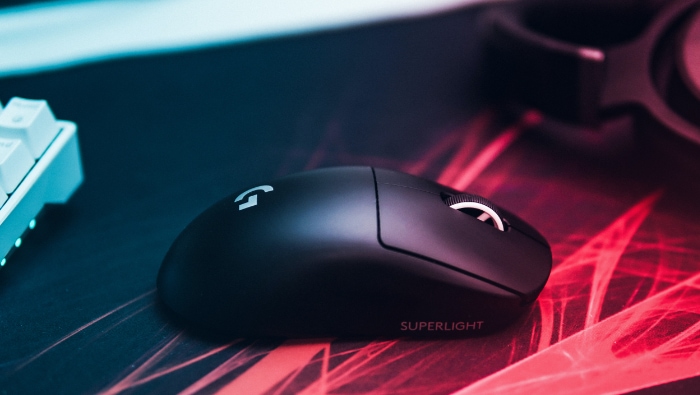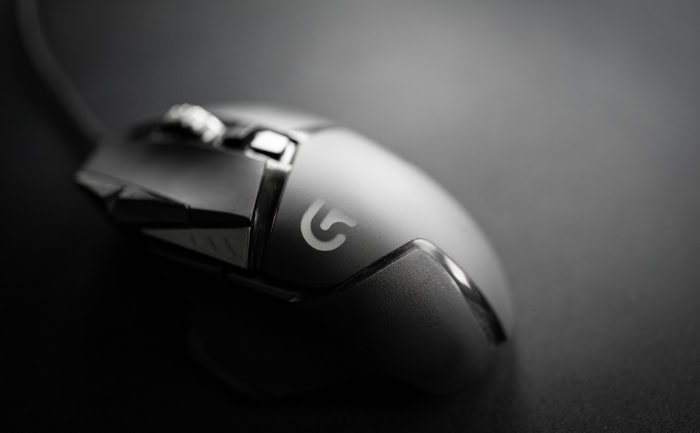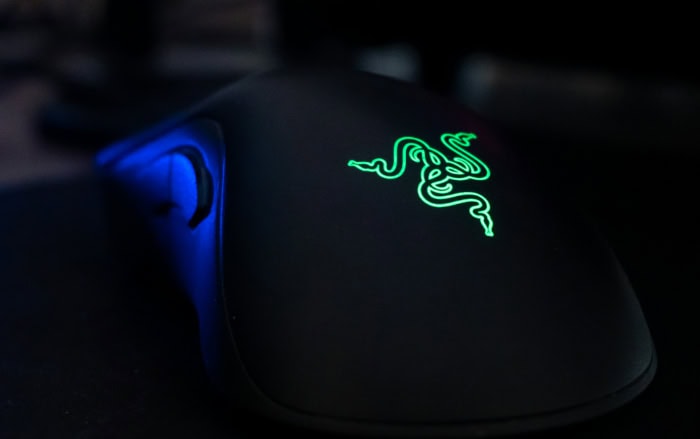Optical vs. Laser Mouse: Glide and Decide

From the humble beginnings of the mechanical ball mouse to today's high-tech options, computer mice have undergone a remarkable transformation. As we click, scroll, and navigate our digital lives, the choice between optical and laser mice becomes increasingly significant.
These two technologies, each with its own strengths and capabilities, cater to diverse needs across gaming, professional work, and everyday computing. Selecting the right mouse can enhance productivity, improve gaming performance, and provide comfort during long hours of use.
The Evolution of Mouse Technology
Computer mice have come a long way since their inception. The progression from mechanical to optical and laser mice represents a significant leap in precision and reliability.
Early mechanical mice used a ball to track movement, which often collected dust and debris, leading to inconsistent performance. The advent of optical and laser technologies revolutionized how we interact with our computers, offering improved accuracy and smoother operation.
Optical Mouse Mechanics
Optical mice utilize LED illumination and image sensor technology to track movement. An LED light source illuminates the surface beneath the mouse, while a small camera captures rapid snapshots of this illuminated area.
As the mouse moves, the image sensor detects changes in the captured images, translating these differences into cursor movement on the screen.
The surface tracking mechanism of optical mice relies on the ability to detect minute variations in the surface texture. This technology works well on most opaque surfaces, providing reliable tracking without the need for special mousepads.
The absence of moving parts in optical mice also contributes to their durability and reduced maintenance requirements.
Laser Mouse Innovation
Laser mice represent a further advancement in mouse technology. Instead of an LED, these mice employ a laser diode to illuminate the surface.
The laser's coherent light allows for more precise surface imaging, enabling the mouse to detect even finer details of the surface texture.
The advanced surface detection capabilities of laser mice make them particularly adept at working on a wider variety of surfaces, including glossy and semi-transparent materials that might challenge optical mice. The increased sensitivity of laser technology also allows for higher resolution tracking, potentially offering greater precision in cursor movement.
Comparing Mouse Performance
When evaluating optical and laser mice, several factors come into play that can significantly impact user experience. These include tracking accuracy, sensitivity, surface compatibility, speed, responsiveness, and polling rates.
Precision and Accuracy
Tracking accuracy refers to how closely the cursor movement on screen matches the physical movement of the mouse. Both optical and laser mice offer high levels of accuracy, but laser mice generally edge out their optical counterparts.
The laser's ability to detect finer surface details often results in more precise tracking, especially at higher sensitivities.
Sensitivity and DPI
Sensitivity is typically measured in DPI (Dots Per Inch), indicating how many pixels the cursor moves for each inch the mouse is moved. Higher DPI settings allow for faster cursor movement with less physical mouse movement.
Laser mice usually offer higher DPI ranges, often reaching up to 16,000 DPI or more, while optical mice commonly range from 400 to 8,000 DPI. However, extremely high DPI settings are not always practical and are often more marketing-driven than functionally necessary for most users.
Surface Adaptability
One of the most significant differences between optical and laser mice lies in their surface compatibility. Optical mice perform well on most opaque, non-reflective surfaces such as mousepads, wood, and cloth.
They may struggle with very smooth or reflective surfaces.
Laser mice, thanks to their more sensitive technology, can work on a broader range of surfaces, including glass and highly polished materials. This versatility makes laser mice particularly useful for users who need to work on various surfaces or in environments where an ideal mouse surface isn't always available.
However, the high sensitivity of laser mice can sometimes be a double-edged sword. On certain surfaces, especially those with complex patterns, laser mice might pick up too much detail, leading to slight jittering or inconsistent tracking.
Responsiveness and Speed
Both optical and laser mice offer excellent responsiveness, with minimal lag between physical movement and on-screen cursor action. The perceived speed and responsiveness often depend more on the mouse's sensor quality and the computer's processing power than on whether it's optical or laser technology.
Polling Rate Impact
Polling rate, measured in Hertz (Hz), indicates how often the mouse reports its position to the computer. A higher polling rate can result in smoother cursor movement and quicker response times, which is particularly important for gaming and high-precision tasks.
Most modern optical and laser mice offer polling rates of 500 Hz to 1000 Hz, meaning they update their position 500 to 1000 times per second. While laser mice might have a slight edge in maximum polling rates, the difference is often negligible for most users.
It's worth noting that very high polling rates can increase CPU usage, which might be a consideration for systems with limited processing power.
Tailoring Mouse Choice to Specific Needs

The choice between optical and laser mice often depends on the intended use. Different activities and professions have varying requirements for precision, speed, and functionality.
Gaming Mouse Preferences
In the world of competitive gaming, mouse selection can significantly impact performance. Different game genres have unique demands, influencing the choice between optical and laser mice.
For First-Person Shooter (FPS) games, many players prefer optical mice due to their consistent tracking on cloth mousepads, which are popular in this genre. The predictable performance of optical sensors is crucial for precise aim in fast-paced shootouts.
Multiplayer Online Battle Arena (MOBA) and Real-Time Strategy (RTS) games often benefit from higher DPI settings, making laser mice a strong contender. The ability to quickly move across large map areas can give players an edge in these genres.
Professional gamers and tournament organizers often lean towards optical mice for their reliability and consistency across different surfaces. Many esports events standardize equipment to ensure fair play, and optical mice are frequently the go-to choice due to their predictable performance.
Professional Design and Modeling
In professional settings such as graphic design, video editing, and 3D modeling, precision and versatility are paramount. Laser mice often excel in these areas due to their high DPI capabilities and ability to work on various surfaces.
Graphic designers and video editors appreciate the smooth, precise movements that high-end laser mice provide. The ability to make minute adjustments is crucial when working with detailed designs or precise video timelines.
For Computer-Aided Design (CAD) and 3D modeling, laser mice offer the advantage of working well on glossy desks or unconventional surfaces often found in design studios. The high sensitivity allows for accurate manipulation of complex 3D models and intricate designs.
Office and Everyday Computing
For general office use and everyday computing tasks, both optical and laser mice can perform admirably. The choice often comes down to personal preference and specific work environment conditions.
In typical office settings with standard desks and mousepads, optical mice provide reliable performance for productivity software, web browsing, and document editing. Their lower price point and good overall performance make them a popular choice for large-scale office deployments.
Laser mice might be preferred in offices with glass desks or unconventional work surfaces. Their versatility ensures consistent performance across various materials, which can be beneficial in modern, design-focused office spaces.
For general web browsing and document editing, the differences between optical and laser mice are often negligible. Most users will find either type sufficient for these everyday tasks, with personal comfort and ergonomics playing a larger role in the selection process.
Advanced Mouse Technologies and Design

Beyond the basic optical and laser distinctions, modern mice incorporate various technologies and design elements that significantly impact their performance and user comfort.
Cutting-Edge Sensor Innovations
The heart of any mouse is its sensor, and recent advancements have pushed the boundaries of what's possible in mouse tracking. One standout example is the PixArt 3366 sensor, widely regarded for its exceptional accuracy and responsiveness.
This optical sensor has become a favorite among gamers and professionals alike due to its high precision and lack of acceleration or angle snapping.
Other popular sensors include the PixArt 3389 and the Sony PMW3389, which offer high DPI ranges and excellent tracking capabilities. These sensors use advanced algorithms to interpret surface textures, resulting in smoother and more accurate cursor movements.
The differences in tracking methods between optical and laser sensors extend beyond just the light source used. Optical sensors typically capture more frames per second, which can lead to more consistent tracking on uniform surfaces.
Laser sensors, while capable of working on a broader range of surfaces, may sometimes pick up microscopic details that can cause slight jitter on certain materials.
Wired and Wireless Connectivity
The debate between wired and wireless mice continues, with each option offering distinct advantages. Wired mice provide a direct, lag-free connection and don't require battery management.
They're often preferred by competitive gamers and professionals who prioritize consistent performance.
Wireless mice, on the other hand, offer freedom of movement and a cleaner desk setup. Modern wireless technologies have significantly reduced latency concerns, with some high-end models achieving performance comparable to wired options.
However, wireless mice still require battery management and may be susceptible to interference in environments with many wireless devices.
Latency considerations are particularly important for gaming and precision work. While the difference in latency between high-quality wired and wireless mice is often imperceptible to most users, competitive gamers may still opt for wired models to eliminate any potential for wireless interference or battery-related issues during crucial moments.
Ergonomic Design and Customization
The physical design of a mouse plays a significant role in user comfort, especially during extended use. Ergonomic mice are shaped to reduce strain on the hand and wrist, potentially mitigating the risk of repetitive stress injuries.
These designs often feature contoured shapes that support the natural position of the hand and fingers.
Many modern mice offer customization options to cater to individual preferences. Adjustable weights allow users to fine-tune the mouse's feel and balance. Some models feature interchangeable side grips or modular components, enabling users to adapt the mouse to their specific grip style and hand size.
The impact of mouse design on long-term comfort cannot be overstated. Users who spend long hours using a mouse, whether for work or gaming, should prioritize ergonomics in their selection process.
A well-designed mouse can significantly reduce fatigue and discomfort during extended use sessions.
Customization extends beyond physical attributes to software features as well. Many high-end mice come with companion software that allows users to adjust DPI settings, program buttons, and create custom profiles for different applications or games.
This level of customization enables users to optimize their mouse performance for specific tasks or preferences.
Practical Aspects of Mouse Ownership

Choosing between an optical and laser mouse involves considerations beyond just performance. Maintenance requirements, durability, cost, and environmental impact all play significant roles in the overall ownership experience.
Upkeep and Performance Optimization
Both optical and laser mice require regular maintenance to ensure optimal performance. The frequency and methods of cleaning can vary slightly between the two types.
Optical mice generally require less frequent cleaning due to their simpler mechanism. A quick wipe of the sensor area with a soft, lint-free cloth is often sufficient to maintain performance.
For more thorough cleaning, a cotton swab lightly dampened with isopropyl alcohol can be used to clean the sensor and feet of the mouse.
Laser mice, with their more sensitive sensors, may require slightly more frequent attention. Dust or debris on the sensor can affect tracking accuracy more noticeably than on optical mice.
The cleaning process is similar to optical mice, but extra care should be taken to ensure the laser aperture is free from any obstructions.
For both types, it's advisable to clean the mouse body and buttons regularly to prevent buildup of oils and dirt from hands. This not only maintains hygiene but also preserves the mouse's appearance and functionality.
Lifespan and Durability Factors
The lifespan of a mouse depends on various factors, including usage patterns, environmental conditions, and build quality. Generally, both optical and laser mice can last for several years with proper care.
Optical mice often have a slight edge in durability due to their simpler internal mechanisms. They have fewer components that can wear out or malfunction over time.
However, high-quality laser mice can match or exceed the lifespan of optical mice, especially when well-maintained.
Environmental factors such as dust, humidity, and temperature can affect both types of mice. Extreme conditions can potentially impact laser mice more due to their sensitive optics, but modern designs have significantly mitigated these issues.
Usage patterns play a crucial role in longevity. Intensive gaming or professional use can wear out mouse buttons and scroll wheels faster than casual use.
The quality of materials used in construction, particularly for switches and cables, greatly influences how well a mouse withstands heavy use over time.
Financial Considerations
The cost of mice varies widely, with options available for every budget. Generally, optical mice tend to be more affordable, with basic models starting at very low prices.
High-end optical gaming mice can command premium prices but are often less expensive than their laser counterparts.
Laser mice typically start at a higher price point due to their more complex technology. The most advanced laser mice, often targeted at professional users or serious gamers, can be significantly more expensive than top-tier optical mice.
When considering long-term value, it's important to factor in potential replacement frequency. While a more expensive mouse might have a higher upfront cost, its longer lifespan and better performance could provide better value over time.
Conversely, for users with simpler needs, a basic optical mouse might offer the best balance of cost and functionality.
Environmental Considerations
The environmental impact of mice is an increasingly important consideration for many users. Both optical and laser mice have similar environmental footprints in terms of materials and manufacturing processes.
The main environmental concern with mice is electronic waste. Choosing a durable mouse that lasts longer can help reduce e-waste.
Some manufacturers offer recycling programs for old peripherals, which can be an important factor for environmentally conscious consumers.
Energy consumption is generally low for both types, but wireless mice have the additional consideration of battery use. Rechargeable batteries in wireless mice are preferable from an environmental standpoint compared to disposable batteries.
Sustainability-focused consumers might also consider mice made with recycled materials or those designed for easy disassembly and recycling at the end of their life cycle. While these features aren't specific to optical or laser technology, they're becoming more common in high-end mice of both types.
Conclusion
Optical and laser mice each offer distinct advantages, catering to diverse user needs and preferences. Performance differences between these technologies have narrowed significantly, with both providing excellent tracking and precision for most applications.
Optical mice excel in consistent performance on standard surfaces and often come at a more accessible price point. Their simplicity and reliability make them ideal for general use and many gaming scenarios.
Laser mice, with their ability to function on a wider range of surfaces and potentially higher sensitivity, appeal to professionals and users requiring versatility.
Factors such as intended use, work environment, and personal comfort should guide the selection process. Gamers might prioritize sensor accuracy and polling rates, while designers could focus on high DPI and surface adaptability.
For office use, ergonomics and long-term comfort often take precedence.
Maintenance requirements, durability, and cost considerations play crucial roles in the overall ownership experience. Both types of mice can offer excellent longevity with proper care, though optical mice might have a slight edge in durability due to their simpler mechanisms.
Advancements in mouse technology continue to push the boundaries of performance and user experience. Future innovations may further blur the lines between optical and laser technologies, potentially offering hybrid solutions that combine the best of both worlds.
Regardless of the chosen technology, selecting a mouse that aligns with individual needs and usage patterns ensures an optimal computing experience.


